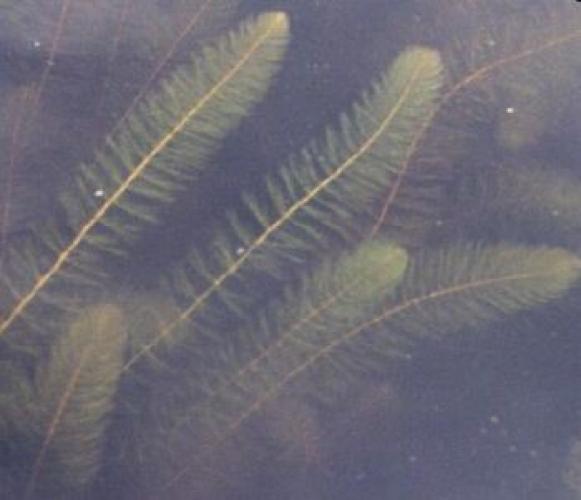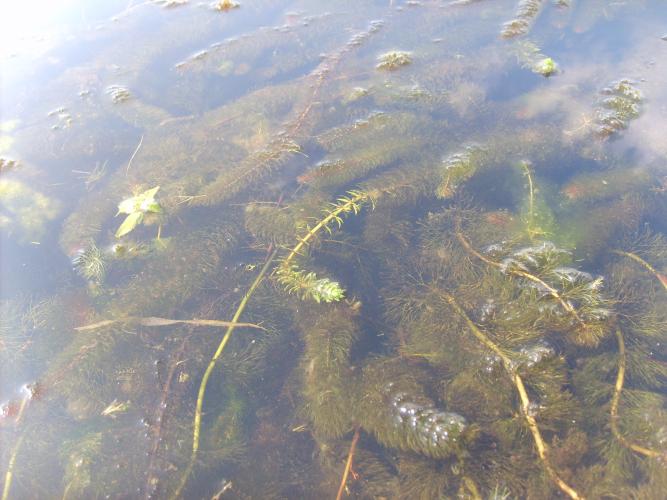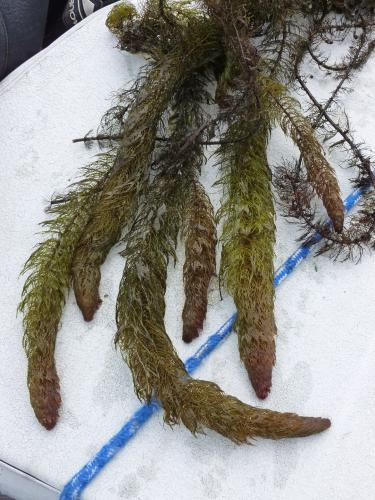Variable-leaved watermilfoil
Identification
Many watermilfoils, native or not, can be difficult to distinguish from one another, especially in the absence of fruits or flowers. In addition to the non-native watermilfoils, variable-leaved and Eurasian (Myriophyllum spicatum), six native watermilfoils exist in Vermont. To identify variable-leaved watermilfoil, look for:
- Densely packed whorls of four to six underwater leaves around the stem
- Underwater leaves with 7 to 11 pairs of leaf segments per leaf
- On mature plants, blade-like leaves with serrated edges appearing above the water surface. Flowers develop at the base of these above-water leaves, forming an erect, stiff spike
- Thick, robust, often reddish stems
Biology
Origin
Native to much of the southeastern and midwestern US, but not indigenous to New England, where it has now been confirmed in all states.
Habitat
Variable-leaved watermilfoil is an extremely well-adapted plant, and can thrive in a variety of environmental conditions. Most often, it is found in relatively shallow bays and coves, but can also inhabit deeper areas and those areas with moderate current. It can grow rooted in water depths up to 20 feet, and potentially deeper under clear water and well-lighted conditions. This plant can colonize various substrates, including organic muck, silt, sand, and gravel. Plants can form terrestrial morphs when stranded out of water, and are able to remain in this land-adapted form until submerged, at which time they revert back into their typical aquatic form.
LifeCycle
Variable-leaved watermilfoil is a hardy perennial, and can propogate through root division, fragmentation, turions, and seeds. Often, but not always, colonies produce spikes that emerge from the water and flower in mid to late summer. Some plants may overwinter intact, while others will break apart and die back to their rootstalks. Plants will begin to grow rapidly from sprouts, turions, and seeds in the spring, and will usually outcompete other plants for light and space.
Vermont Distribution
Map of national distribution of variable-leaved watermilfoil. Regions where the plant is believed to be native are indicated in orange; introduced populations are indicated in red.
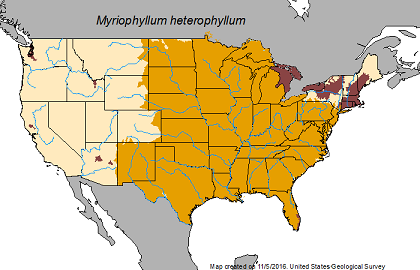
Documented populations of variable-leaved watermilfoil in Vermont. Note: rapid response efforts to the finding of plants in Hall's Lake appear to be successful, as no new plants have been found in recent years.
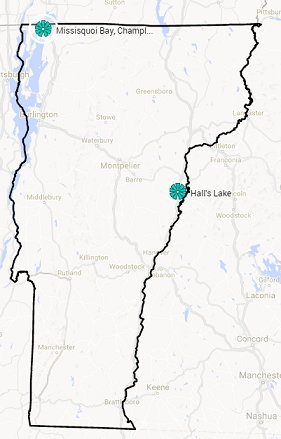
How You Can Help
For most aquatic invasive species, humans are the primary vector of transport from one waterbody to another. Many of these nuisance plants and animals can be unknowingly carried on fishing gear, boating equipment, or in very small amounts of water in a watercraft. The easiest and most effective means to ensure that you are not moving aquatic invasives is to make sure that your vessel, as well as all your gear, is drained, clean, and dry.
BEFORE MOVING BOATS BETWEEN WATERBODIES:
-
CLEAN off any mud, plants, and animals from boat, trailer, motor and other equipment. Discard removed material in a trash receptacle or on high, dry ground where there is no danger of them washing into any water body.
-
DRAIN all water from boat, boat engine, and other equipment away from the water.
-
DRY anything that comes into contact with the water. Drying boat, trailer, and equipment in the sun for at least five days is recommended. If this is not possible, then rinse your boat, trailer parts, and other equipment with hot, high-pressure water.
Interested in monitoring for aquatic invasives?
- Join the VIPs! Vermont Invasive Patrollers help search for new infestations so we can respond immediately and prevent them from becoming established.
Citations
Les, D.H. and L.J. Mehrhoff. 1999. Introduction of nonindigenous aquatic vascular plants in southern New England: a historical perspective. Biological Invasions 1:281-300.
Crow G.E. and C.B. Hellquist. 2000. Aquatic and Wetland Plants of Northeastern North America. Vol 1. University of Wisconsin Press, Madison.
V. Howard. 2016. Myriophyllum heterophyllum. USGS Nonindigenous Aquatic Species Database, Gainesville, FL. Revision Date: 10/31/2008
Maine Volunteer Lake Monitoring Program, Variable Water Milfoil
